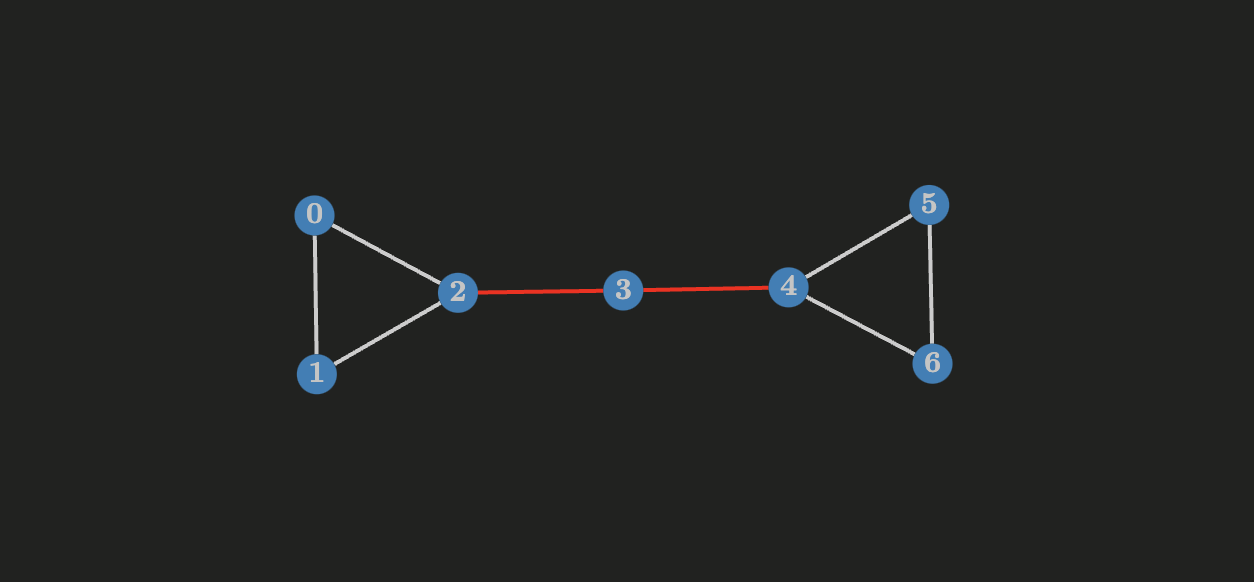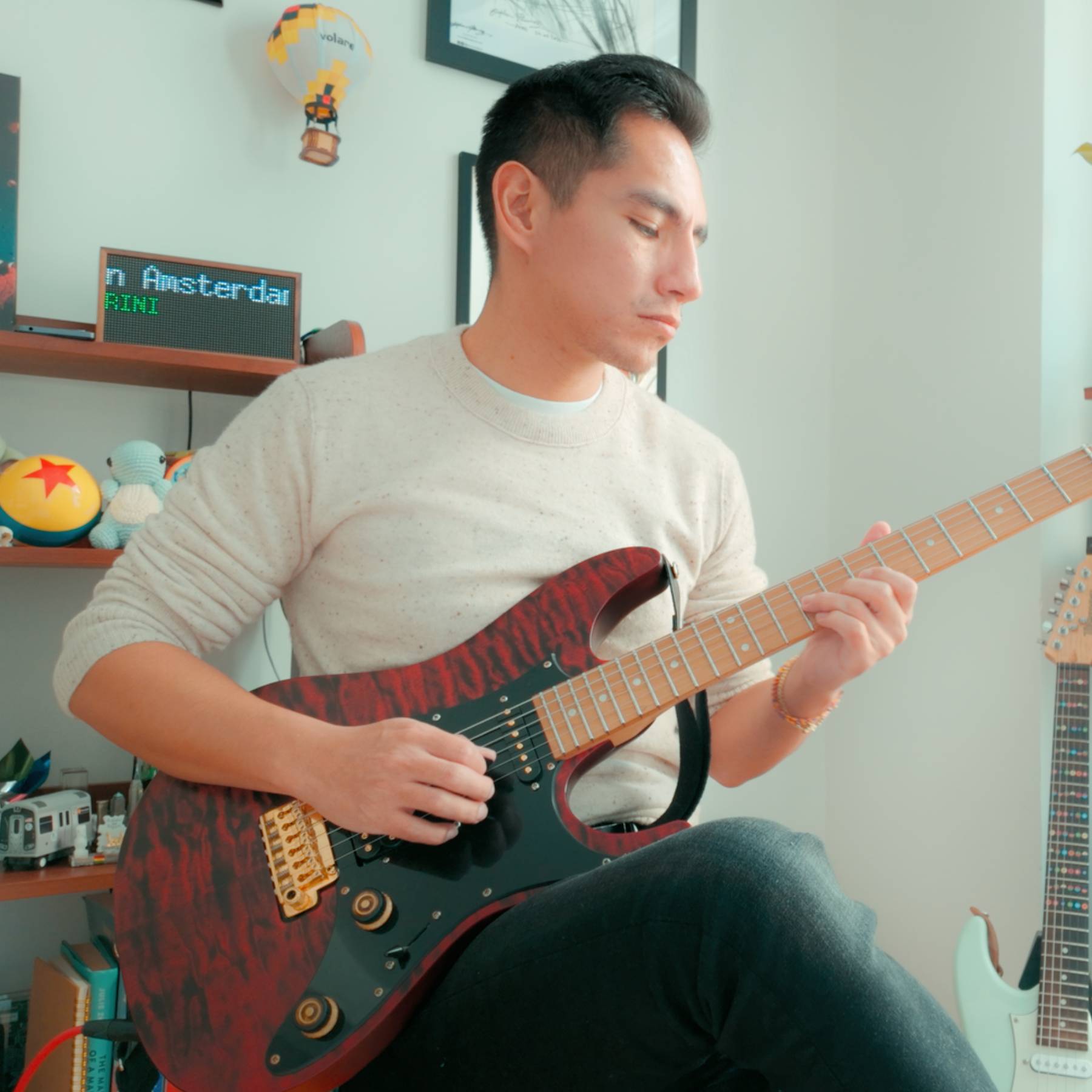Undirected graph
In the following undirected graph
- An edge
- Every edge of an undirected tree is a bridge.
Let
- Let
- If there’s a back edge
- Otherwise, the edge is a bridge.
- If there’s a back edge
Implementation notes
- To check if a successor of a vertex
- Let
- Let
int time_spent;
// the adjacency list representation of `G`
vector<vector<int> > g;
// the time a vertex `i` was discovered first
vector<int> time_in;
// stores the discovery time of the lowest predecessor that vertex `i`'s
// succesor vertices can reach **through a back edge**, initially
// the lowest predecessor is set to the vertex itself
vector<int> back;
// the bridges found during the dfs
vector<pair<int, int> > cut_edge;
void dfs(int v, int parent) {
// the lowest back edge discovery time of `v` is
// set to the discovery time of `v` initally
back[v] = time_in[v] = ++time_spent;
for (int i = 0; i < g[v].size(); i += 1) {
int next = g[v][i];
if (next == parent) {
continue;
}
if (time_in[next] == -1) {
dfs(next, v);
// if there's a back edge between a descendant of `next` and
// a predecessor of `v` then `next` will have a lower back edge discovery time
// otherwise it's a bridge
if (back[next] > time_in[v]) {
cut_edge.push_back(pair<int, int> (v, next));
}
// propagation of the lowest back edge discovery time
back[v] = min(back[v], back[next]);
} else {
// *back edge*
// update the lowest back edge discovery time of `v`
back[v] = min(back[v], time_in[next]);
}
}
}
/**
* Finds the bridges in an undirected graph `G` of order `n` and size `m`
*
* Time complexity: O(n + m)
* Space complexity: O(n)
*/
void bridges() {
int n = g.size();
time_spent = 0;
time_in.assign(n, -1);
back.assign(n, -1);
cut_edge.clear();
for (int i = 0; i < n; i += 1) {
if (time_in[i] == -1) {
dfs(i, -1);
}
}
}
Directed graph (strong bridges)
Let
The following is a connected graph
A trivial algorithm to find the strong bridges of a digraph
- Compute the number of strongly connected components of
- For each edge
- remove
- compute the number of strongly connected components of
- if
The time complexity of the algorithm above is clearly
Let
http://www.sofsem.cz/sofsem12/files/presentations/Thursday/GiuseppeItaliano.pdf



